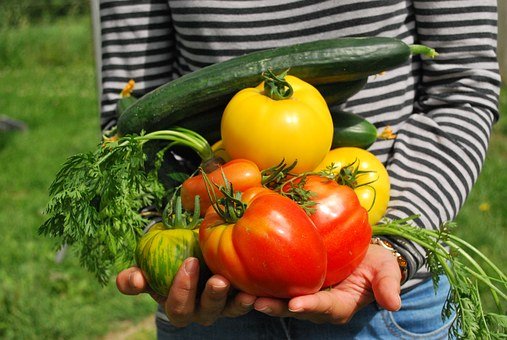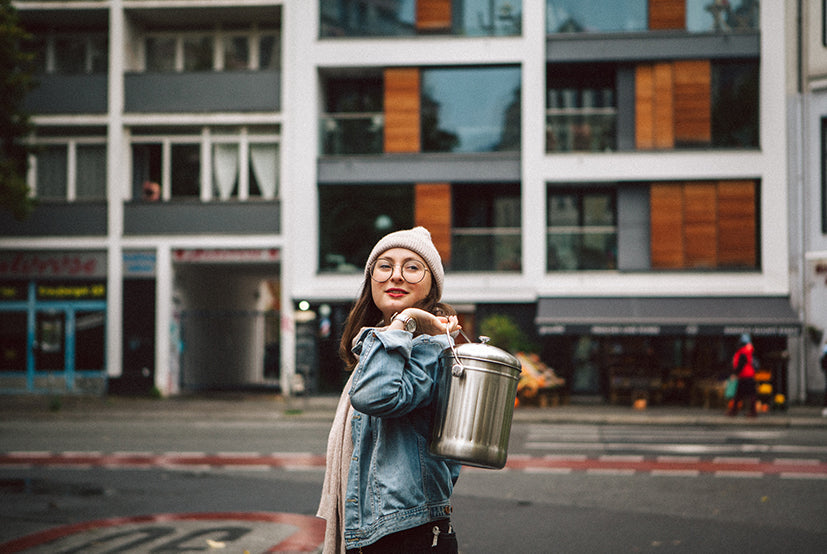
GARDENING, BUT SUSTAINABLY
In summer, many of us rediscover our green fingers. Whether it's on the balcony, windowsill or in a real garden - who doesn't feel proud when their own plants are actually thriving? We've looked at how you can make gardening sustainable.
Gardening and sustainability - isn't that somehow obvious? Unfortunately, not quite. Unfortunately, for many people, gardening often means working against nature and taming it to suit their own ideas instead of enjoying its diversity. Here are 7 tips on how to make gardening more environmentally friendly.
1. Use high-yielding plants
Why enrich the existing area with ornamental plants when you can benefit twice from them with herbs, vegetables or fruit? There is a whole world of knowledge hidden here that is worth acquiring. Some plants, for example, add extra nutrients to the soil so that the soil no longer needs fertilizing. A bed arrangement that originates from South America and has been used for thousands of years is the "three sisters." Corn, beans and pumpkin form a real power triangle: the beans give the soil a lot of nutrients, the pumpkin gives the plants sun protection with its large leaves and the corn serves as a trellis for the beans.
2. Wild herbs instead of weeds
Unfortunately, weed is a rather misleading term, as most "weeds" are actually medicinal herbs with many different uses. Nettles, for example, are wonderful for draining the body, and many of the plants that are so despised can be used in salads or teas. Most of the supposed weeds actually have a good effect and should be picked and reused rather than discarded.
3. In the yard or garden: bee meadow instead of ornamental lawn
Sure, an English lawn looks great in the garden - but how much nicer are colorful, wild flower meadows? Not only do they look wonderfully natural and diverse, they also offer shelter for numerous insects that need it more and more urgently.
4. Use native plants
As with nutrition, the same applies to gardening: regional is better. Instead of exotic flowers, you can also use native plants, which also look very beautiful and are better suited to the local climate.
4. Permaculture also works in the home garden
Permaculture is a science in itself and perhaps a bit ambitious to begin with, but the principle of gardening should be to work with nature rather than against it.
Every plant should be able to live out its needs. Therefore, each one should be cared for according to the nutrients it needs, the water it needs and the location it is in. Here too, point 4 plays into your hands with a choice of native plants.
5. Plastic-free garden tools
It's also worth taking a second look at the tools. Hoes and shovels made of metal are easier to recycle after they've been in use. Our gardening gloves , for example, are made entirely without plastic and are still robustly made for gardening. If your hands get dirty and don't want to be cleaned properly after gardening, we also have this small but fine hand and nail brush for you.
6. Use natural pesticides and fertilizers
Many plant care products are chemically produced and come in large plastic packaging. Many of them can be easily made yourself using household remedies: for example, you can simply chop organic banana peels into small pieces after peeling them and bury them in the soil of flowering plants. They provide the flowers with phosphate and potassium. Dried banana peels are also great for mulching in spring. To do this, simply chop them up in a blender and mix them into the grass clippings.
If you ever have to deal with aphids, you can easily avoid using chemical protection agents: add 1 liter of water and 3 tablespoons of nettle tea and let it steep for almost 24 hours. Then pour the brew into a spray bottle and spray the affected plants with it.
You can also reuse your old coffee grounds to naturally protect your plants from insects.
You can also use your own compost as fertilizer. You can even do this in your home these days. Can't imagine it? Then take a look at our article "Compost at home: How to make the black gold yourself".
7. Reuse kitchen scraps
Many things that are supposedly kitchen waste can be processed in the garden and even grown into completely new plants. For example, you can grow spring onions and bulbs yourself. Put the white root end of the spring onion in a glass of water in a sunny spot and watch how they grow back all by themselves.
The root end of the bulbs, which is about 1cm long, can be cut off and planted in a flowerpot with soil. If kept moist, a bulb plant will grow back.
Sustainable gardening just requires a little creativity and a natural way of thinking and can be a lot of fun. As long as you work with nature rather than against it when gardening, you can't really go wrong.



Leave a comment
This site is protected by hCaptcha and the hCaptcha Privacy Policy and Terms of Service apply.